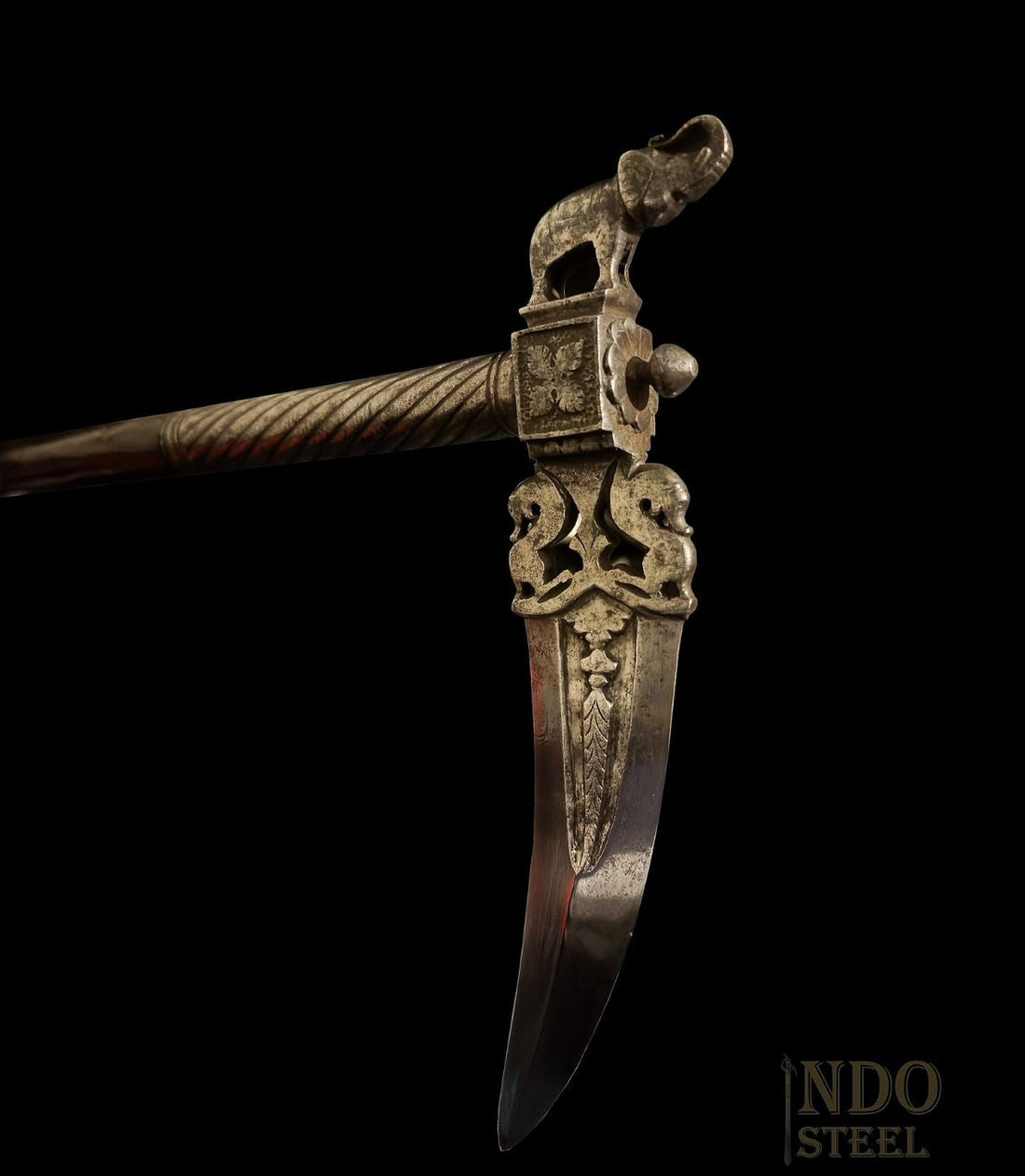
The Zaghnol

The Zaghnol Axe, otherwise known as "زاغنال" in Persian, translates to "Crow's Beak" due to its distinctive crowbill-shaped blade. This weapon, designed for penetration and stabbing rather than traditional chopping, is associated with close-combat situations, particularly where armour penetration was essential. It was likely first created in response to the growing effectiveness of armour and the need for more specialized weaponry. While it is difficult to pinpoint an exact date for the introduction of the Zaghnol Axe in India, it is likely that such weapons appeared shortly after the Mughals consolidated power in northern India, around the mid-to-late 16th century.
Within the Ain-i Akbari, we can find detailed descriptions of the Mughal military's armament, including axes. In the text we can see a detailed depiction of what resembles a Zaghnol. The Ain-i-Akbari details the lavishness of the imperial armoury, where axes like the Zaghnol were not just functional weapons but part of the imperial display of wealth and power.
According to Richard M. Eaton, the symbolic significance of weaponry extended to the Mughal rulers' interactions with their nobility. Warriors who were skilled in wielding heavy weapons like the Zaghnol were often granted higher ranks and more prestigious positions within the court. The ruler's ability to arm and empower his soldiers not only reflected his administrative capabilities but also his reputation as a strong and capable leader.
References:
-
Eaton, Richard M. A Social History of the Deccan, 1300-1761: Peasants, Social Change, and Urbanization in Southern India. Cambridge University Press, 2005.
-
Abu’l-Fazl. Ain-i-Akbari, translated by H. S. Jhabvala, 1989.
